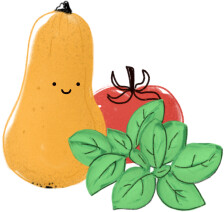Karl der Grosse

Variety
Karl der Grosse
created by steffen a. at 09.03.2022
Season Overview
Sowing
Harvest
Harvest
J
F
M
A
M
J
J
A
S
O
N
D
1ST YEAR
FOLLOWING YEARS
Description
In traditional horseradish cultivation, thin, pencil-thick side roots of the horseradish are collected, cut into pieces of approx. 30 cm, bundled and stored in the sand in a cool, shady place over the winter. In spring, the so-called Fechser (this is the name of the thin, pencil-thick roots) are planted out at a distance of 20 cm in the row and 50-60 cm between the rows, at an angle of approx. 45°. When planting out (which usually takes place in early spring, but can generally be done from November to March after the mother plants have been uprooted), a small piece of the root still peeks out of the soil. If the fennel is planted too shallowly, the increase in size of the root (it should become much thicker and reach sales size) remains modest; if the root is planted vertically, too much of the plant's strength goes into the haulm, into leaf growth. When the finished, two-year-old horseradish is harvested, the thin, pencil-thick lateral roots are cut off and collected, and so on and so forth.
Non hybrid
Frostproof
Growing tips
No growing tips available for this plant.
Details
Plant distance
20 cm
Row spacing
55 cm
Seeding depth
Not specified
Companion Plants
Antagonistic Plants
Arugula / Rocket
Broccoli
Brussels sprouts
Cabbage (Cabbage)
Cauliflower
Collard greens (Kale)
Collard greens (Tuscan kale / Dinosaur kale / Palm tree kale)
Cress
Kohlrabi / German turnip / Turnip cabbage
Mustard
Oil radish / Fodder radish
Pak Choi
Radish
Radishes
Rutabaga / Swedish turnip
Turnip
Turnip-rooted chervil
Diseases
Downy mildew
Club root of cabbage
Pests
Cabbage white
Flea beetles
Caterpillars
Mustard beetle
Larvae
Aphids
Voles